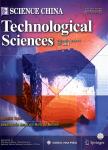Numerical investigation of radial inflow in the impeller rear cavity with and without baffle
Numerical investigation of radial inflow in the impeller rear cavity with and without baffle作者机构:Institute of Engineering Thermophysics Chinese Academy of Sciences Beijing 100190 China Graduate University of Chinese Academy of Sciences Beijing 100049 China
出 版 物:《Science China(Technological Sciences)》 (中国科学(技术科学英文版))
年 卷 期:2016年第59卷第3期
页 面:456-467页
核心收录:
学科分类:0810[工学-信息与通信工程] 080704[工学-流体机械及工程] 08[工学] 0807[工学-动力工程及工程热物理] 0805[工学-材料科学与工程(可授工学、理学学位)] 0702[理学-物理学] 0812[工学-计算机科学与技术(可授工学、理学学位)]
基 金:supported by the National Natural Science Foundation of China(Grant No.51306177)
主 题:impeller rear cavity de-swirling device baffle Batchelor's Model Vortex Model
摘 要:In typical small engines, the cooling air for high pressure turbine (HPT) in a gas turbine engine is commonly bled off from the main flow at the tip of the centrifugal impeller. The pressurized air flow is drawn radially inwards through the impeller rear cavity. The centripetal air flow creates a strong vortex because of high inlet tangential velocity, which results in significant pressure losses. This not only restricts the mass flow rate, but also reduces the cooling air pressure for down-stream hot com- ponents. The present study is devoted to the numerical modeling of flow in an impeller rear cavity. The simulations are can'ied out with axisymmetric and 3-D sector models for various inlet swirl ratio ,80 (0-0.6), turbulent flow parameter 2-r (0.028-0,280) with and without baffle. The baffle is a thin plate attached to the stationary wall of the cavity, and is proved to be useful in re- ducing the pressure loss of centripetal flow in the impeller rear cavity in the current paper. Further flow details in impeller rear cavity with and without baffle are displayed using CFD techniques. The CFD results show that for any specified geometry, the outlet pressure coefficient of impeller rear cavity with or without baffle depends only on the inlet swirl ratio and turbulent flow parameter. Meanwhile, the outlet pressure coefficient of the cavity with baffle is indeed smaller than that of cavity without baffle, especially for the cases with high inlet swirl ratio. The suppression of the effect of centrifugal pumping and the mixing beween the main air which is downstream of the baffle and the recirculating flow of the vortex in the stationary cavity, which are caused by the use of baffle, are the underlying reasons that lead to the reduction of outlet pressure loss.



